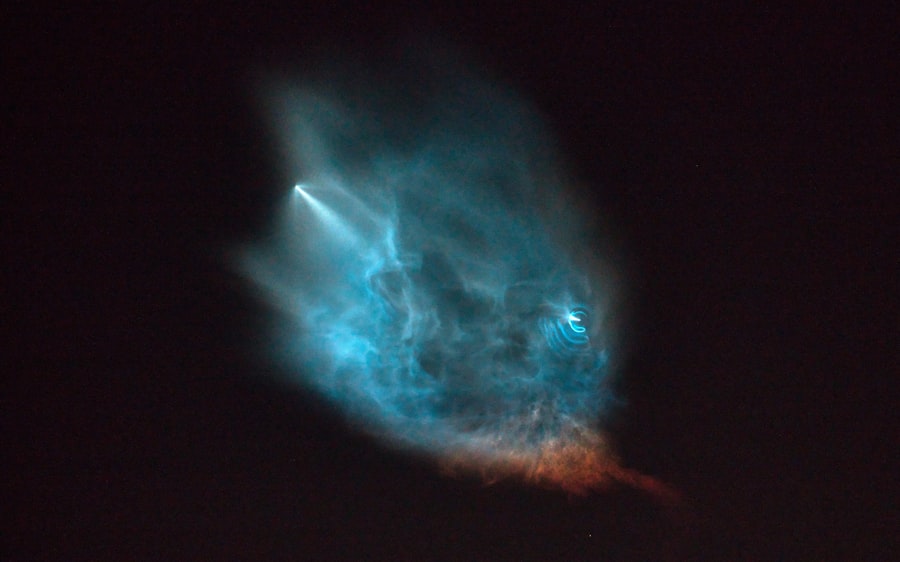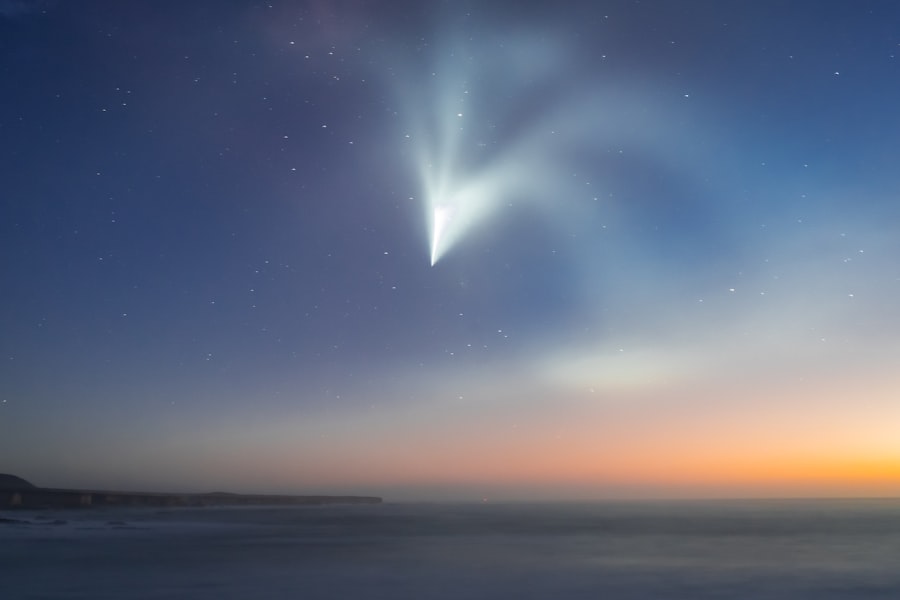SpaceX, officially known as Space Exploration Technologies Corp., was founded in 2002 by Elon Musk with the ambitious goal of reducing space transportation costs and enabling the colonization of Mars. Musk’s vision was not merely to create a private aerospace manufacturer but to revolutionize space travel. The company’s first significant milestone came in 2008 when its Falcon 1 rocket became the first privately developed liquid-fueled rocket to reach orbit.
This achievement marked a turning point in the aerospace industry, demonstrating that private companies could successfully compete with government agencies like NASA. Following the success of Falcon 1, SpaceX rapidly expanded its capabilities. The introduction of the Falcon 9 rocket in 2010 further solidified its position in the industry.
This two-stage rocket was designed for the reliable and safe transport of satellites and the International Space Station (ISS). In 2012, SpaceX made history again by becoming the first commercial company to deliver cargo to the ISS, a feat that underscored its growing significance in space logistics. The development of the Falcon Heavy, which debuted in 2018, showcased SpaceX’s ability to carry heavier payloads, further broadening its operational scope and attracting a diverse range of clients from both governmental and commercial sectors.
Key Takeaways
- SpaceX was founded in 2002 by Elon Musk with the goal of reducing space transportation costs and enabling the colonization of Mars.
- Today’s mission marks the first crewed flight of SpaceX’s Crew Dragon spacecraft and the first time NASA astronauts have launched from U.S. soil since 2011.
- The Crew Dragon spacecraft is equipped with advanced technology, including touchscreen controls and autonomous docking capabilities.
- The crew includes NASA astronauts Doug Hurley and Bob Behnken, both experienced space travelers with multiple missions under their belts.
- The SpaceX mission is headed to the International Space Station (ISS) to deliver the crew and supplies, marking a new era of commercial space travel and collaboration with NASA.
The Significance of Today’s Mission
Today’s mission represents a pivotal moment not only for SpaceX but also for the future of human spaceflight. As SpaceX continues to push the boundaries of what is possible in space exploration, each launch serves as a testament to the advancements made in technology and engineering. This particular mission is significant because it involves a crewed flight that aims to demonstrate the capabilities of the Crew Dragon spacecraft, which is designed to transport astronauts to and from the ISS.
The successful execution of this mission will reaffirm SpaceX’s role as a key player in NASA’s Artemis program, which aims to return humans to the Moon and eventually send astronauts to Mars. Moreover, this mission is emblematic of a broader shift in space exploration, where public-private partnerships are becoming increasingly vital. By collaborating with NASA and other organizations, SpaceX is not only enhancing its own technological prowess but also contributing to a collective effort that could redefine humanity’s presence in space.
The implications of this mission extend beyond immediate scientific goals; it symbolizes a new era where commercial entities can take on responsibilities traditionally held by government agencies, potentially leading to more innovative solutions and faster advancements in space technology.
The Technology Behind the SpaceX Launch

The technology that powers SpaceX’s launches is a culmination of years of research, development, and iterative testing. At the heart of this technology is the Falcon 9 rocket, which features a reusable first stage designed to return to Earth after launch. This reusability is a game-changer in aerospace economics, significantly lowering the cost per launch.
The rocket is equipped with nine Merlin engines that provide exceptional thrust and efficiency, allowing it to carry payloads into low Earth orbit and beyond. The Crew Dragon spacecraft, which is central to today’s mission, incorporates cutting-edge technology designed for safety and reliability. It features an autonomous docking system that allows it to connect with the ISS without requiring manual intervention from astronauts.
Additionally, Crew Dragon is equipped with advanced life support systems that ensure a safe environment for crew members during their journey. The spacecraft also includes an innovative launch escape system that can propel it away from the rocket in case of an emergency during ascent, further enhancing crew safety.
The Crew on Board: Who are the Astronauts?
| Name | Nationality | Agency | Mission |
|---|---|---|---|
| Shane Kimbrough | USA | NASA | Crew-2 |
| Megan McArthur | USA | NASA | Crew-2 |
| Akihiko Hoshide | Japan | JAXA | Crew-2 |
| Thomas Pesquet | France | ESA | Crew-2 |
The astronauts selected for today’s mission represent a diverse group of highly trained individuals with extensive backgrounds in various fields. Each crew member brings unique skills and experiences that contribute to the overall success of the mission. For instance, one astronaut may have a background in engineering, while another might be a seasoned pilot with numerous hours logged in high-performance aircraft.
This diversity not only enriches the team dynamic but also enhances problem-solving capabilities during unexpected challenges. Among the crew members is an astronaut who has previously spent time aboard the ISS, providing invaluable insights into life in microgravity. Another crew member may be participating in their first spaceflight but has undergone rigorous training to prepare for this momentous occasion.
The selection process for astronauts is meticulous, involving extensive evaluations of physical fitness, psychological resilience, and technical expertise. This ensures that each individual is not only capable of performing their duties but also able to work effectively as part of a cohesive team under pressure.
The Destination: Where is the SpaceX Mission Headed?
Today’s mission is primarily focused on transporting astronauts to the International Space Station (ISS), a collaborative project involving multiple countries and space agencies. The ISS serves as a microgravity laboratory where scientific research can be conducted across various disciplines, including biology, physics, and materials science. By sending astronauts to the ISS, SpaceX plays a crucial role in maintaining this vital platform for international cooperation in space exploration.
The journey to the ISS typically involves a series of carefully planned maneuvers that allow the spacecraft to rendezvous with the station after launch. Once docked, astronauts will conduct experiments and perform maintenance tasks that are essential for the continued operation of the ISS. This mission not only supports ongoing research but also prepares astronauts for future deep-space missions by providing them with experience in living and working in space for extended periods.
The Potential Impact of the Mission on Space Exploration

The implications of today’s mission extend far beyond its immediate objectives. Successful completion will bolster confidence in commercial spaceflight capabilities and pave the way for future missions that could include lunar landings and even crewed missions to Mars. As SpaceX continues to demonstrate its reliability and efficiency, other private companies may be inspired to enter the aerospace sector, fostering competition that could lead to further innovations.
Moreover, this mission serves as a critical step toward establishing a sustainable human presence in space. By continuously sending astronauts to the ISS and conducting experiments that advance our understanding of living in microgravity, we are laying the groundwork for future exploration beyond low Earth orbit. The knowledge gained from these missions will be invaluable as humanity prepares for more ambitious endeavors, such as establishing bases on the Moon or Mars.
Challenges and Risks of the SpaceX Launch
Despite its impressive track record, every SpaceX launch comes with inherent risks and challenges that must be meticulously managed. One significant concern is related to technical malfunctions that could occur during various phases of the launch or flight. For instance, issues with rocket engines or navigation systems could jeopardize both crew safety and mission success.
To mitigate these risks, SpaceX employs rigorous testing protocols and redundancy systems designed to ensure that backup options are available should primary systems fail. Another challenge lies in environmental factors such as weather conditions at both launch and landing sites. High winds, lightning, or thick cloud cover can delay launches or necessitate last-minute changes to flight plans.
Additionally, once in space, astronauts face potential hazards such as radiation exposure and microgravity effects on their bodies over extended periods. Addressing these challenges requires comprehensive training for astronauts and continuous monitoring of both spacecraft systems and environmental conditions throughout the mission.
How to Watch the SpaceX Launch Live
For those eager to witness today’s historic launch live, there are several options available for viewing. SpaceX typically streams its launches on its official website and YouTube channel, providing real-time coverage that includes pre-launch commentary, liftoff sequences, and post-launch analysis. Viewers can expect high-definition visuals showcasing various stages of the launch process, from ignition through ascent and eventual docking with the ISS.
In addition to online streaming platforms, many news organizations also provide live coverage of significant space missions, often featuring expert commentary and insights from aerospace analysts. Social media platforms like Twitter and Facebook may also host live updates and discussions surrounding the launch event, allowing fans and enthusiasts to engage with one another while following along with the mission’s progress. Whether through official channels or social media interactions, watching a SpaceX launch live offers an exhilarating glimpse into humanity’s ongoing journey into space exploration.


